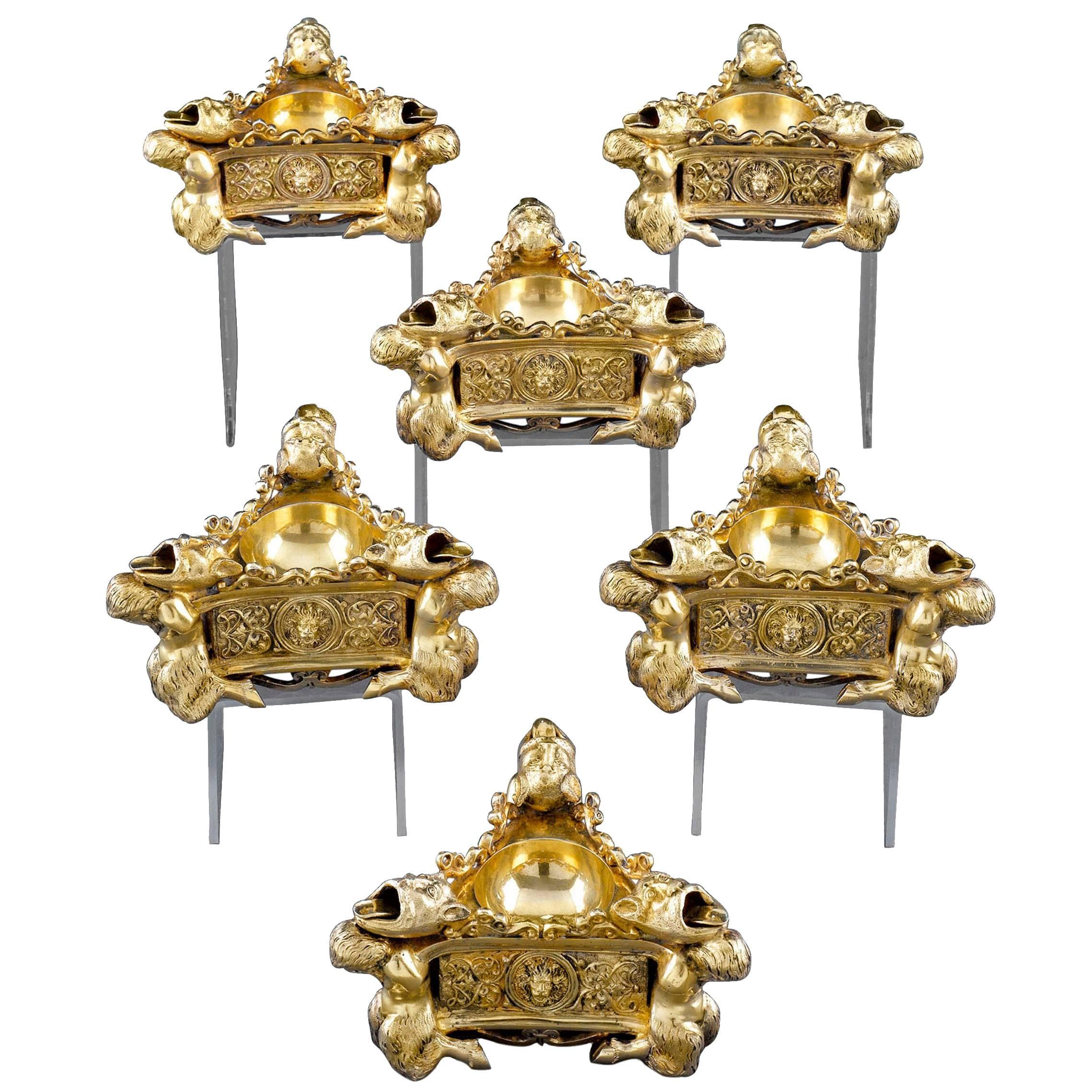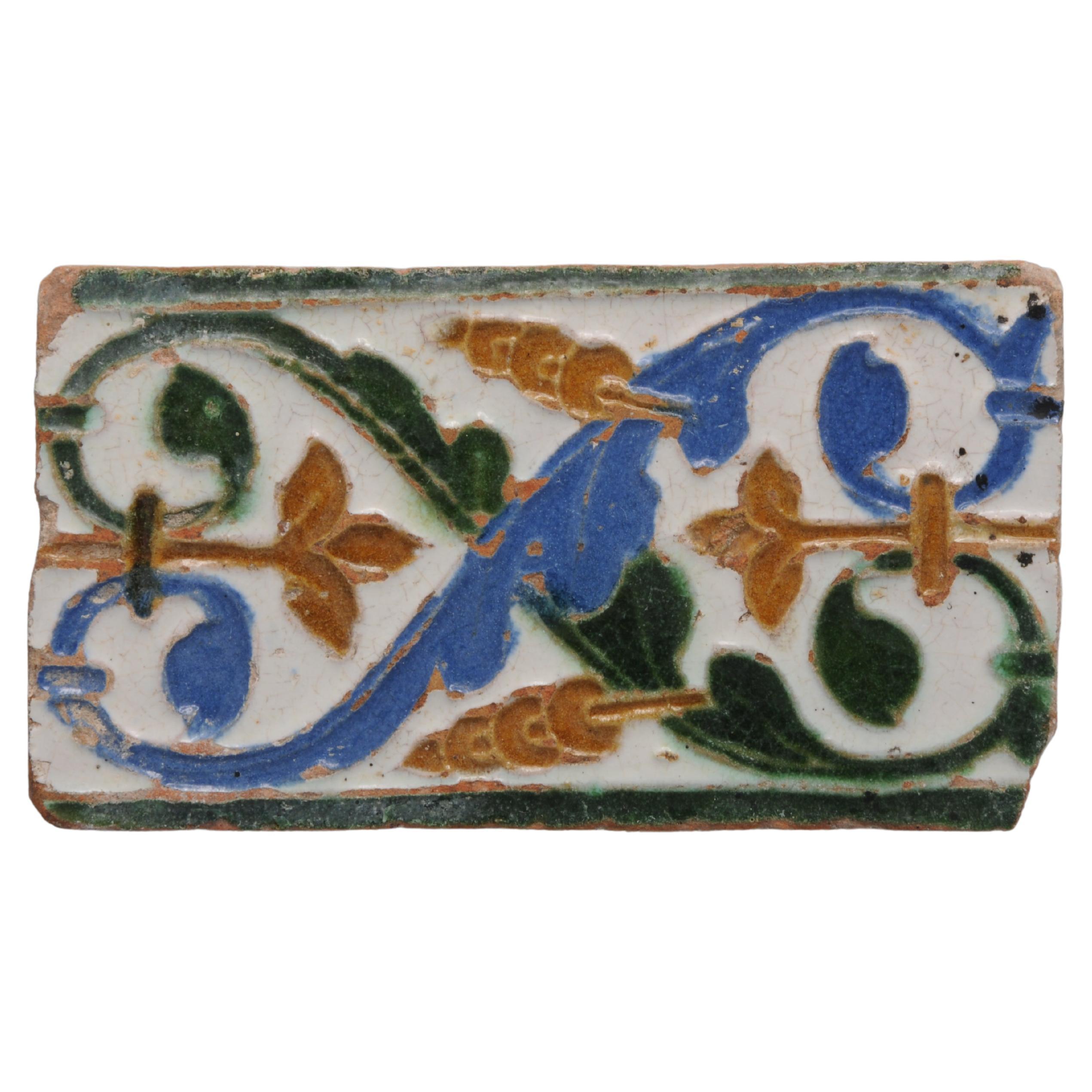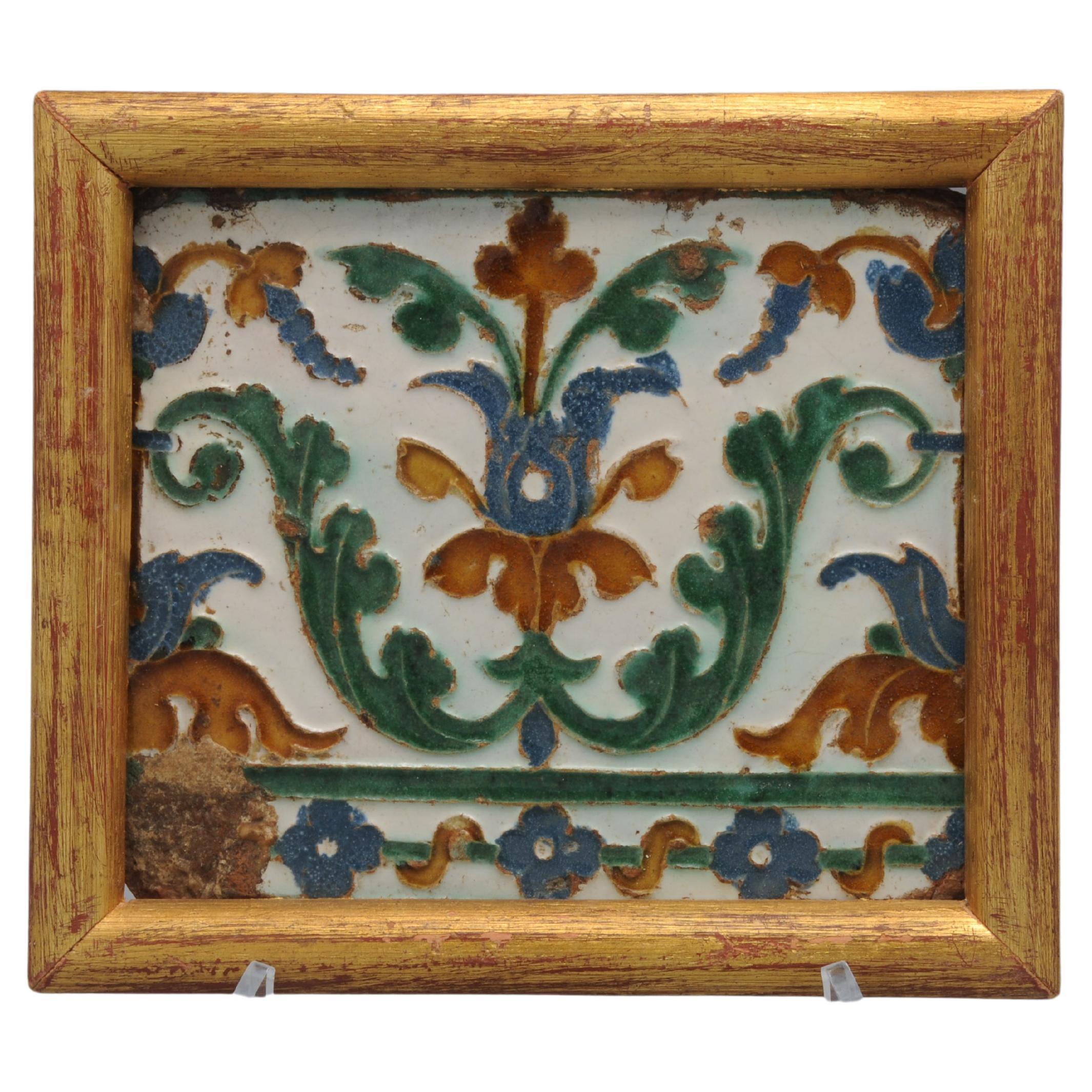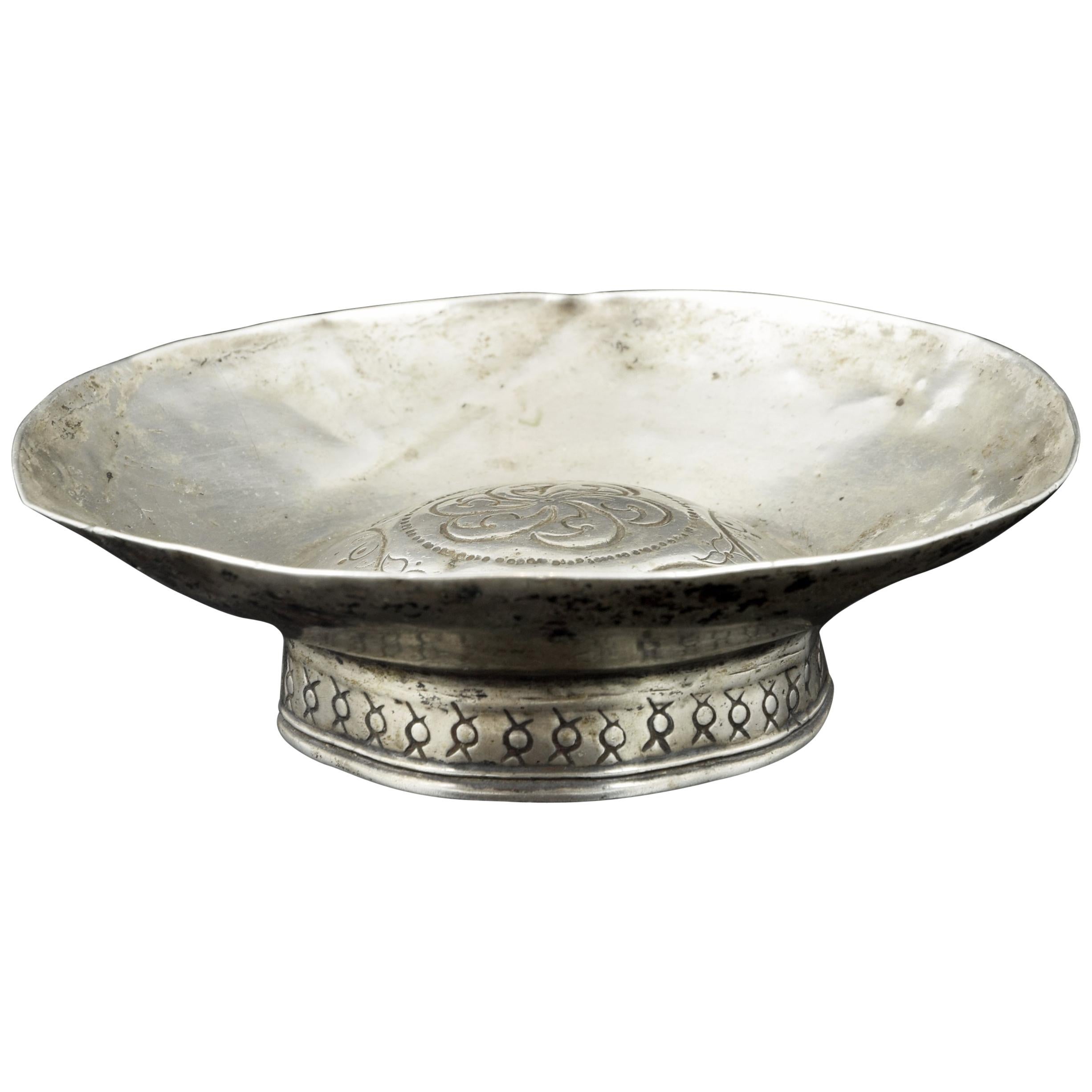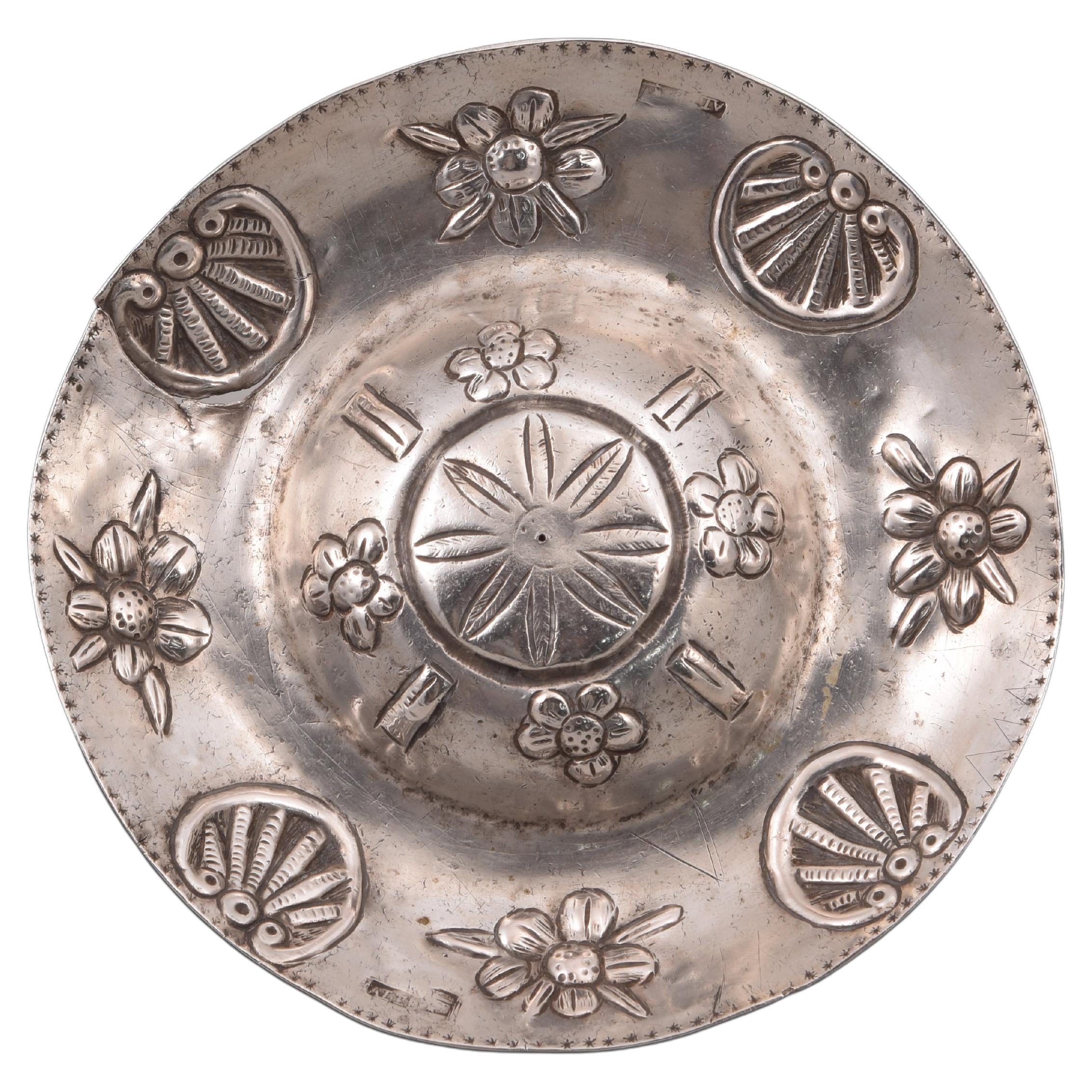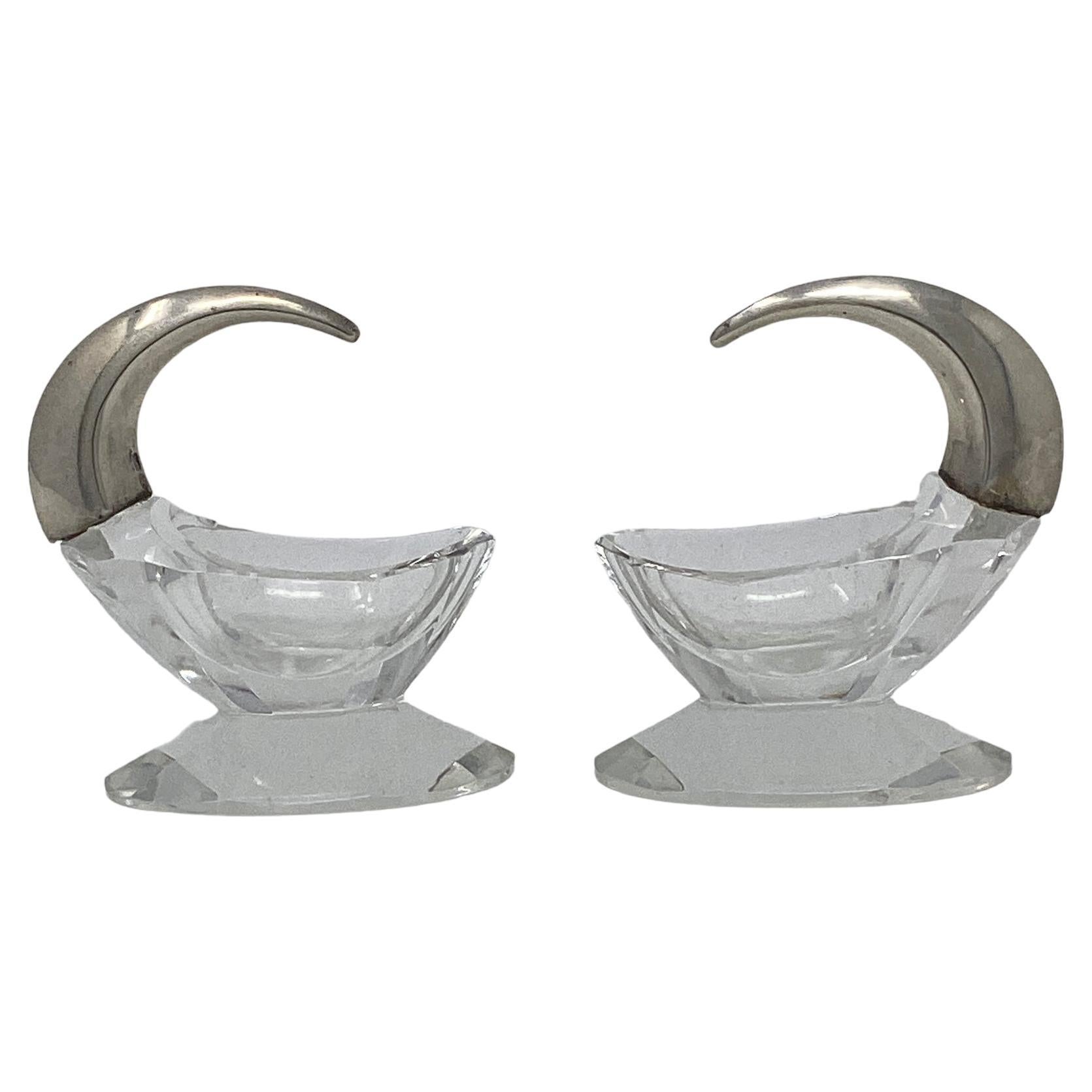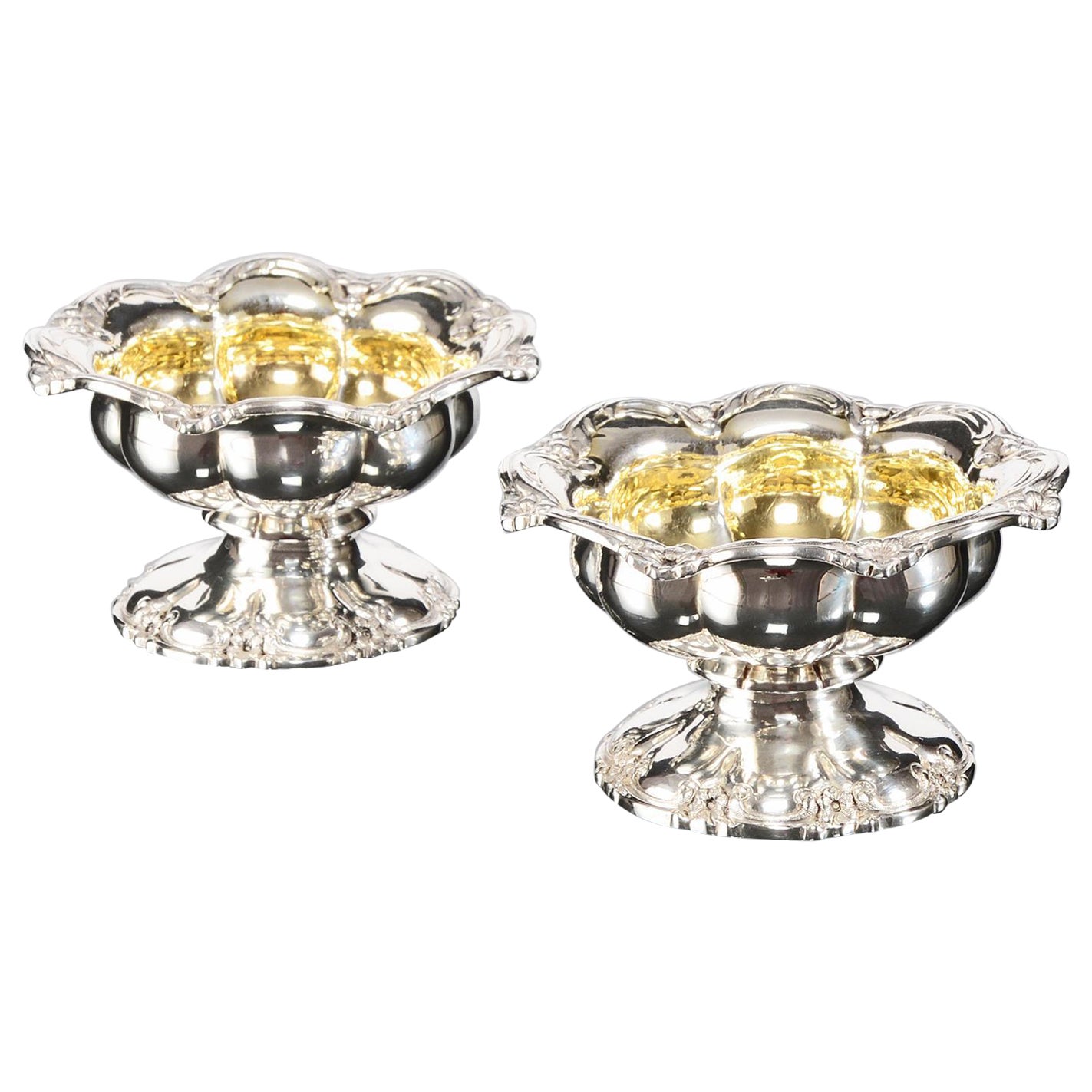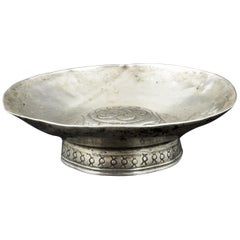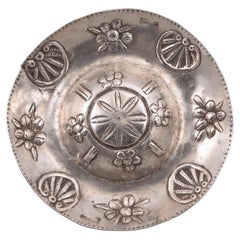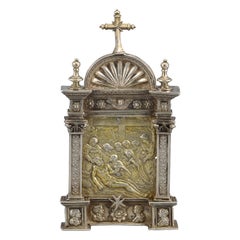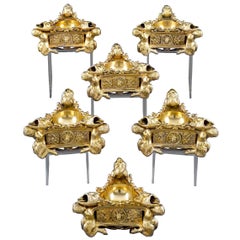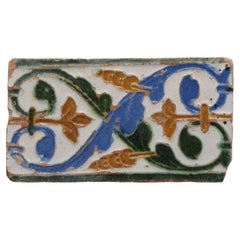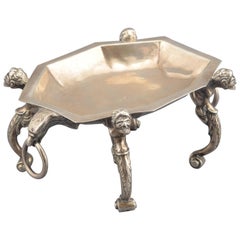
Silver Salt Cellar, Toledo, Spain, 16th Century
View Similar Items
Want more images or videos?
Request additional images or videos from the seller
1 of 12
Silver Salt Cellar, Toledo, Spain, 16th Century
About the Item
- Dimensions:Height: 2.76 in (7 cm)Width: 5.91 in (15 cm)Depth: 4.34 in (11 cm)
- Style:Renaissance (Of the Period)
- Materials and Techniques:
- Place of Origin:
- Period:16th Century
- Date of Manufacture:16th Century
- Condition:Wear consistent with age and use. Minor losses. Minor structural damages. Minor fading.
- Seller Location:Madrid, ES
- Reference Number:Seller: ZF03091stDibs: LU2951312446213
About the Seller
4.9
Vetted Seller
These experienced sellers undergo a comprehensive evaluation by our team of in-house experts.
Established in 1985
1stDibs seller since 2017
292 sales on 1stDibs
Typical response time: 1 to 2 days
More From This SellerView All
- Silver Drinking Cup, Spain, 16th CenturyLocated in Madrid, ESAlso known as "catavinos", this type of drinking cups were used on special occasions (ceremonies ...), hence their material and the decoration they have, and were very common during the reign of the Habsburgs in Spain. Although they were objects of civil use, it was not strange that they were donated or ordered for their use in churches or in liturgical areas. Both the decoration and the shape of the cup show the origin of the same artistic core away from the main silversmith centers. Compare, for example, with the "bernegal" with handles in the form of cartons from the Museo del Prado in Madrid (catalog O00085) made in the late 16th century, which presents the upper part carved in concave double gallons and shows vegetable prints...Category
Antique 16th Century Spanish Renaissance More Dining and Entertaining
MaterialsSilver
- Silver Ceremonial Cup, Spain, 16th CenturyLocated in Madrid, ESCatavinos or scrapie. Silver in its color. Spain, 16th Century. With contrast marks, illegible. Cup without foot or handles, in silver in its color and with a circular base, flar...Category
Antique 16th Century Spanish Renaissance More Dining and Entertaining
MaterialsSilver
- Silver Pax O Portapaz, Spain, 16th CenturyLocated in Madrid, ESPortapaz. Silver in its color and gilded. Century XVI. Portapaz made of silver that has a handle (decorated with delicate plant motifs similar to those of the pilasters) and a female and a male bust at the bottom, as well as other architectural elements on the back, and, on the front, an architectural composition classicist basement (with busts flanking a flower and a cross), two pilasters (vegetal decoration and capital recalling the composite order) with entablature (flowers flanking an angel's head; moldings), and a semicircular arch finish with elements veined in relief under cross and flanked by two architectural motifs in the upper part. This composition frames and enhances a gilt silver relief where you can see the Lament or Cry over the Body of Christ, with the Virgin holding the head of Jesus, Saint John at her side, the Magdalene and other characters, a cross following the group and a landscape background with houses and plant elements. This architectural structure mentioned is similar to the one present in other 16th century portapaces, such as that of the Magdalena de Dos Hermanas parish (Hernando de Ballesteros el Mozo, around 1575); or that of the Galaroza parish (same author and date); or that of the portapaz of San Miguel de Jerez de los Caballeros (in some details); etc. As for the relief, it is possible to clearly see a strong Italian influence, and the similarity between it and important pieces such as the Portapaz known as “de Cisneros by Juan de Burgos (1493-1497; MuseoCatedralicio de Alcalá de Henares), as well as in paintings and reliefs. Also noteworthy are both the male and female busts in the lower area and the Maltese cross (or Saint John's) that appears in this area. This symbol was used since the 12th century as an insignia by the Knights Hospitallers of the Order of Saint John of Jerusalem, also known as the Order of Malta...Category
Antique 16th Century Spanish Renaissance Religious Items
MaterialsSilver
- Processional Cross, Silver, Barbastro, Aragón, Spain, 16th CenturyLocated in Madrid, ESWith hallmarks. It is necessary to indicate the survival in this piece of some details from the Spanish Gothic silverware (cresting, which appears around the XV century; the endings ...Category
Antique 16th Century Spanish Renaissance Religious Items
MaterialsSilver
- Wrought Iron Grille, Spain, 16th CenturyLocated in Madrid, ESTypologically, it is a partial architectural grating with an ornamental and defensive purpose at the same time. Likewise, it clearly shows some of the striking decorative and typolog...Category
Antique 16th Century Spanish Renaissance Religious Items
MaterialsWrought Iron
- “Ressurrection”, Polychromed Wood, Spanish School, 16th CenturyLocated in Madrid, ESThe relief was probably a door of the Sagrario. The piece follows a customary decoration in the tabernacles of the Renaissance and the Baroque. Compare, for example, with the sevente...Category
Antique 16th Century Spanish Renaissance Religious Items
MaterialsOther
You May Also Like
- Continental Silver Gilt Salt CellarsLocated in New Orleans, LAThis set of six 19th century Continental silver gilt salt cellars take the triangular form of silver salts used by the affluent in Renaissance-era Germany. The salts are masterfully executed in a bold Mannerist style...Category
Antique 19th Century Unknown Renaissance Tableware
MaterialsSilver
$28,850 / set - Sterling Silver Art Deco Salt CellarsLocated in Brooklyn, NYWe are delighted to offer you this pair of Art Deco sterling silver salt cellars from the 1920s. Not only is it rare to find a pair of salt cellars but the Ruby red color and oval sh...Category
Vintage 1920s American Art Deco Sterling Silver
MaterialsSterling Silver
$435 / item - Spanish Azulejo Tile Arista y Cuenca - Toledo 16th centuryBy Estadio of SpainLocated in DELFT, NLEarly Arista y cuenca tile made in Toledo. Tile decorated in renaissance with stylized flowers was probably made between 1550 and 1575.Category
Antique 16th Century Spanish Renaissance Ceramics
MaterialsEarthenware
- Spanish Azulejo Tile Arista / Cuenca - Toledo 16th centuryBy Estadio of SpainLocated in DELFT, NLEarly Arista / border tile made in Toledo. Tile decorated in renaissance with stylized flowers was probably made between 1550 and 1575. Catalogue: La Azulejería Toledana a Través ...Category
Antique 16th Century Spanish Renaissance Ceramics
MaterialsEarthenware
- Spanish Azulejo Tile Arista y Cuenca - Toledo 16th centuryBy Estadio of SpainLocated in DELFT, NLEarly Arista y cuenca tile made in Toledo. Tile decorated in renaissance with stylized flowers was probably made between 1550 and 1575.Category
Antique 16th Century Spanish Renaissance Ceramics
MaterialsEarthenware
- Pair Continental Silver Cowry Shell Open Salt Cellars George III, 18th CenturyLocated in Gardena, CAPair Continental silver cowry shell open salt Cellars George III, 18th Century. Figural hand chased shells to the feet. Unmarked. Additional information...Category
Antique 18th Century George III Tableware
MaterialsSilver
Recently Viewed
View AllMore Ways To Browse
Spanish Eagle
Eagle Tray
Sixteenth Century Rings
Small Salt Cellar
Open Salt Cellar
Used Processional Cross
Antique Processional Cross
Processional Cross
Cross Processional
Grocer Weight
Cordoba Ring
Set Of Silver Spoons
Sterling Flatware Set
Monogrammed Sterling Flatware
Sterling Silver Flatware Monogram
Teaspoon Set
Silver Teaspoon Set
Flatware Service
